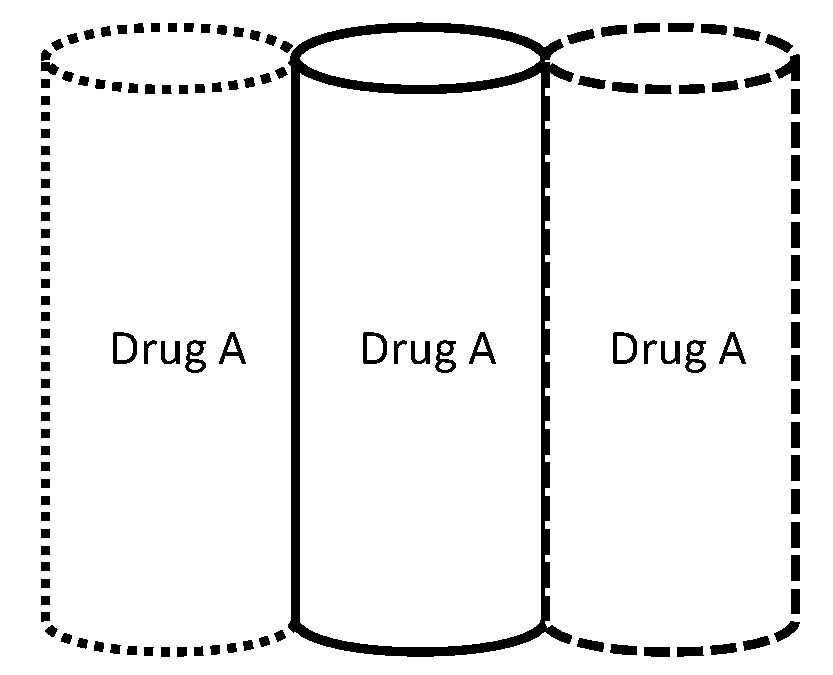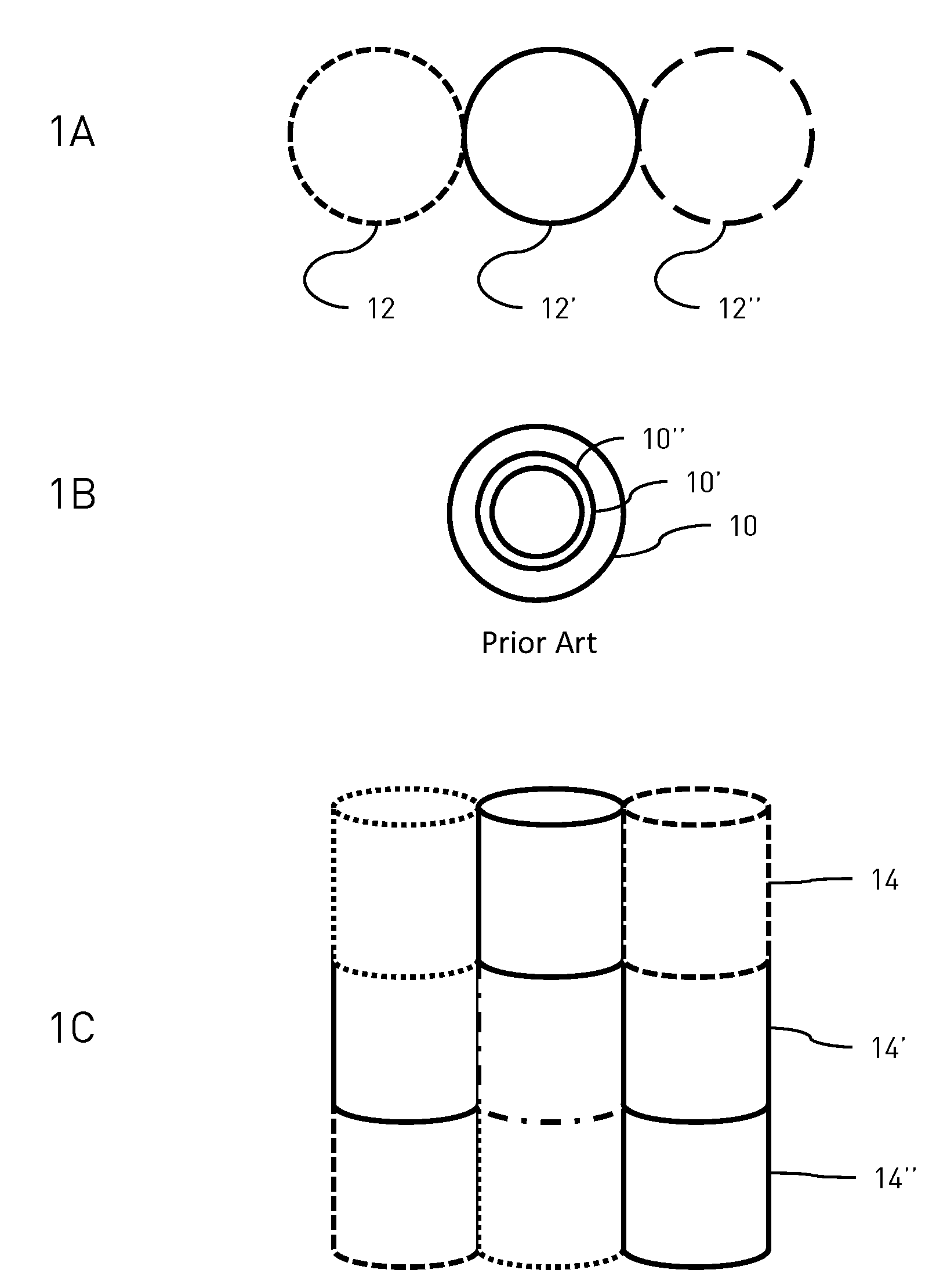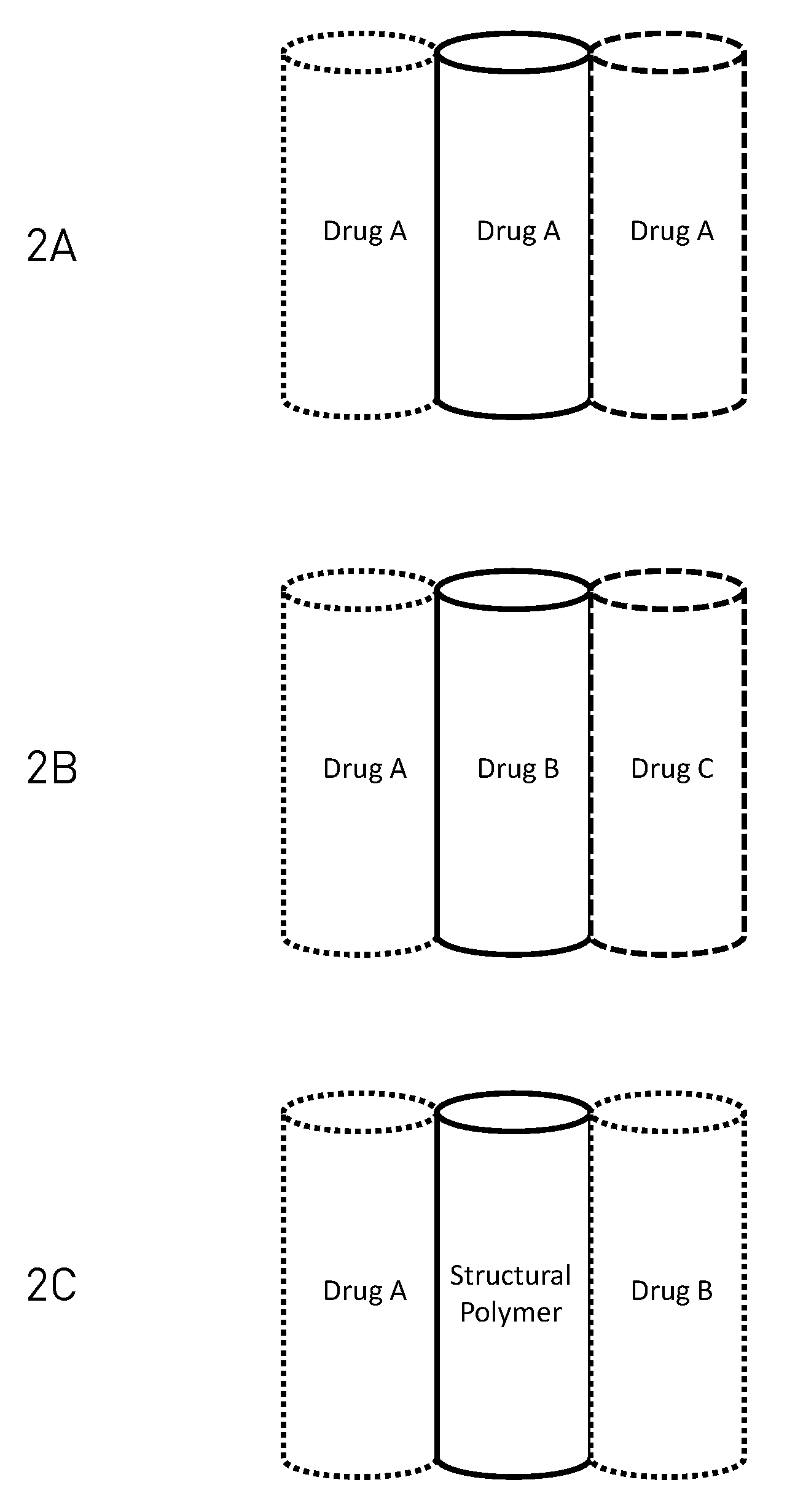Layered drug delivery polymer monofilament fibers
- Summary
- Abstract
- Description
- Claims
- Application Information
AI Technical Summary
Benefits of technology
Problems solved by technology
Method used
Image
Examples
example 1
Wet-Spinning of Multi-Component Device
[0233]In a first example, two component layered fiber devices were prepared from two solutions containing polymer and drug dissolved in a common solvent. In several of the following examples, the drug levofloxacin and the polymer PLGA were dissolved in dimethyl sulfoxide (DMSO). Polycaprolactone (PCL) dissolved in acetone was also used. Approximately 1 ml of each polymer solution was loaded into a 5 ml glass syringe. The outlets of the syringes were connected to a 22 gauge Y-connector by Teflon tubing. The polymer was extruded through the tubes into the connector (FIG. 3a) by a syringe pump. The outlet of the connecter was placed in a coagulation bath (containing water in this case). The stream of coagulated filament was passed through the bath under guide posts and taken up onto a rotating bobbin. This scheme is outlined in FIG. 3b. Although only a two layer fiber device was made using this scheme, a higher order multi-component device could be...
example 2
Two Component Filament with Single Drug in Two Forms
[0234]As previously discussed, the release profile of drug from a fiber is dependent on the amount of drug that was used during the formulation. It was found that if particles of drug (not dissolved) were present in the initial solution then release was much faster than if the drug was completely dissolved. A two component layered fiber was fashioned from each kind of solution. Solution 1 had 150 mg levofloxacin and 500 mg PLGA (RG 506 from Boehringer Ingleheim) dissolved in 1.5 gm DMSO. Solution 2 had 250 mg of levofloxacin but was the same otherwise. At room temperature, solution 2 was a suspension of levofloxacin (with particles visibly present) white solution 1 was translucent, indicating full levofloxacin dissolution. The solutions were joined through a 22 gauge Y-connecter and extruded as described in Example 1. Fibers were also fashioned from solution 1 only and solution 2 only. The total extrusion time was 45 seconds and th...
example 3
Two Polymers Containing a Single Drug
[0235]Two types of PLGA were formulated with levofloxacin and extruded as above. Solution 1 contained PLGA Resolmer RG 506, which has a 50:50 ratio of lactide:glycolide. Solution 2 contained PLGA Resomer RG 756, which has a 75:25 ratio of lactide:glycolide. The individual and combined releases are shown in FIG. 10. The fiber with RG 506 releases drug over approximately 2 weeks while the fiber made from RG 756 has a 10 day induction period before release begins. A layered, two-component device of the two polymers has a sustained release profile throughout the release areas of both individual polymers. SEM images of this fiber (FIG. 11) show that there are few differences between the two components, which is expected since they have similar compositions and drug contents and were dissolved in the same solvent.
PUM
| Property | Measurement | Unit |
|---|---|---|
| Length | aaaaa | aaaaa |
| Time | aaaaa | aaaaa |
| Diameter | aaaaa | aaaaa |
Abstract
Description
Claims
Application Information
 Login to View More
Login to View More - R&D
- Intellectual Property
- Life Sciences
- Materials
- Tech Scout
- Unparalleled Data Quality
- Higher Quality Content
- 60% Fewer Hallucinations
Browse by: Latest US Patents, China's latest patents, Technical Efficacy Thesaurus, Application Domain, Technology Topic, Popular Technical Reports.
© 2025 PatSnap. All rights reserved.Legal|Privacy policy|Modern Slavery Act Transparency Statement|Sitemap|About US| Contact US: help@patsnap.com



